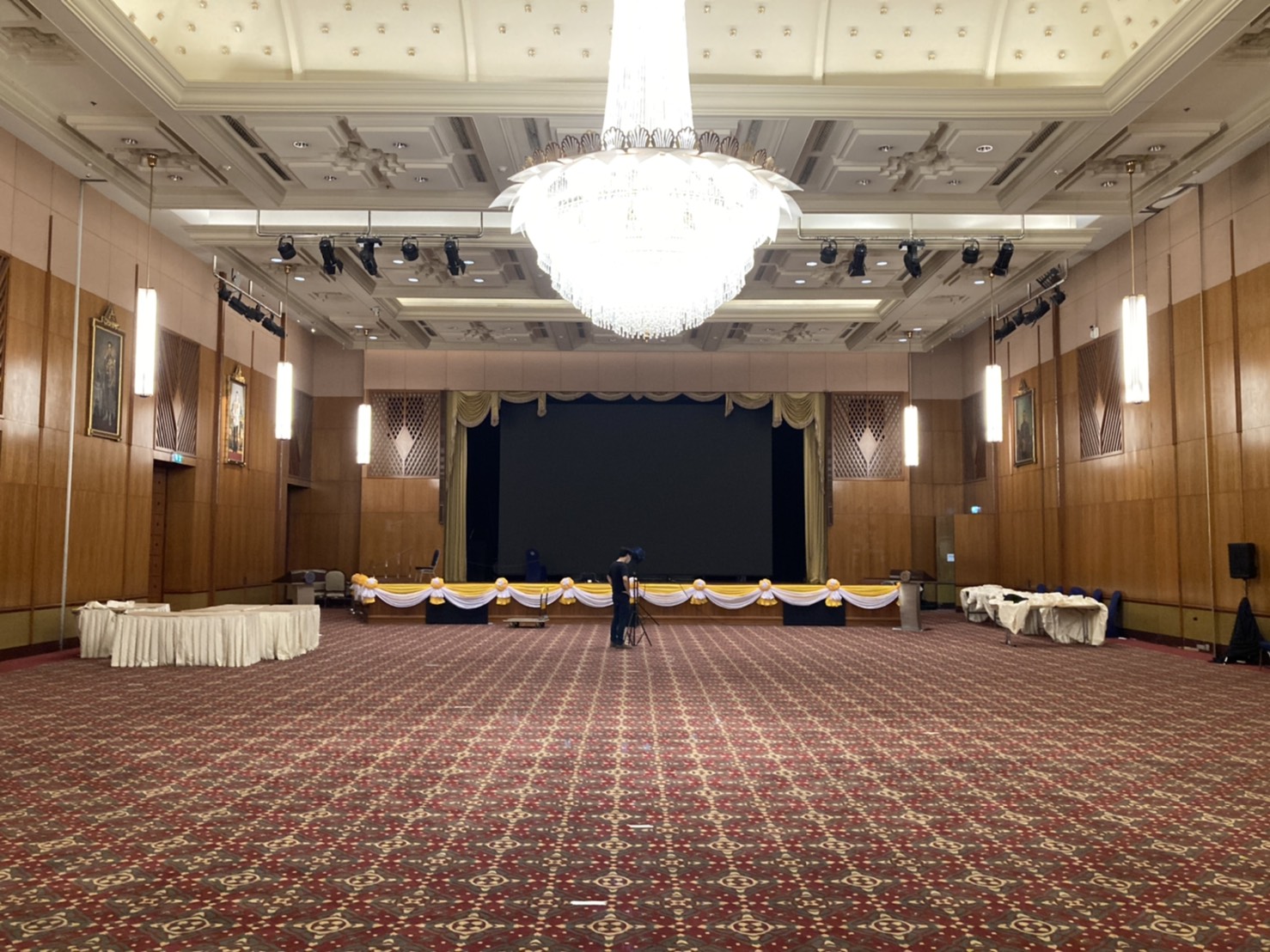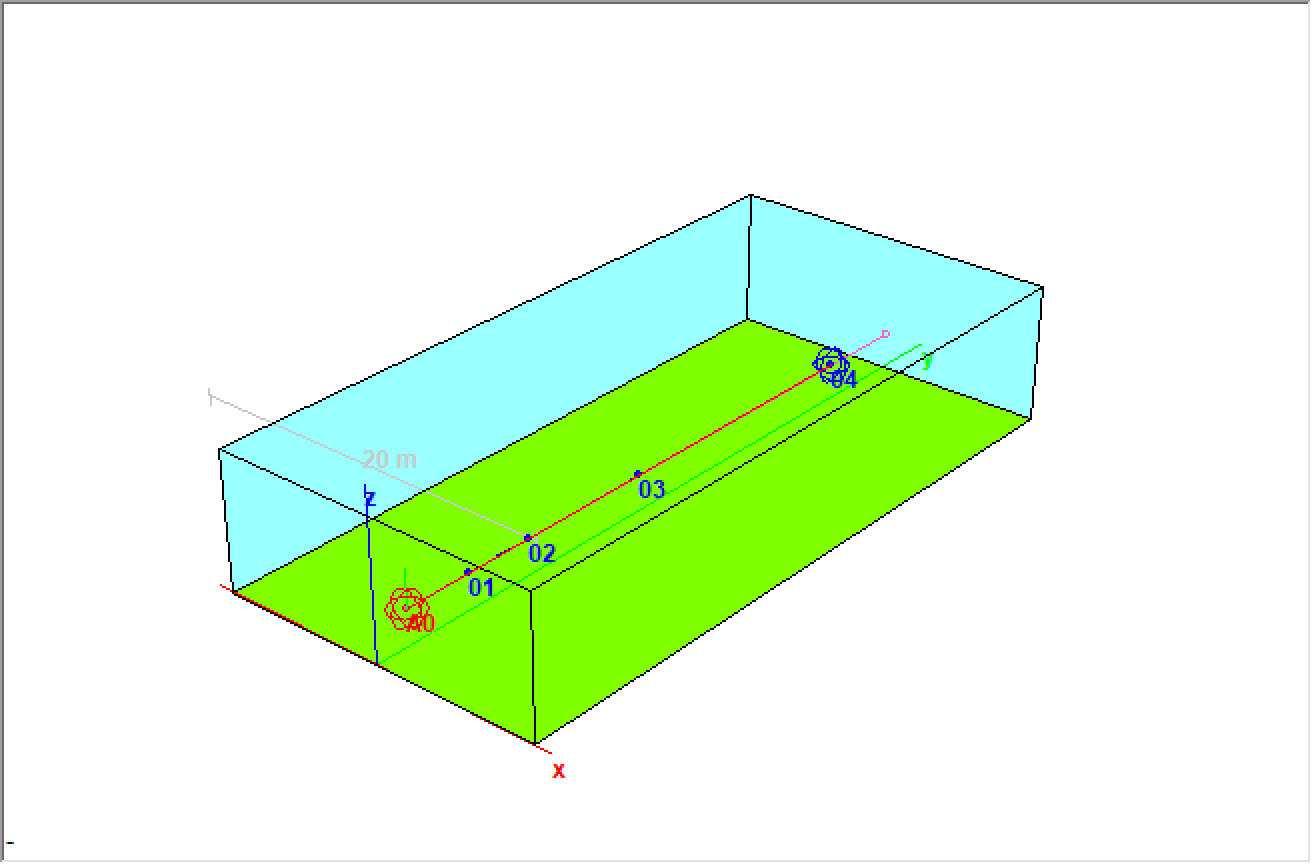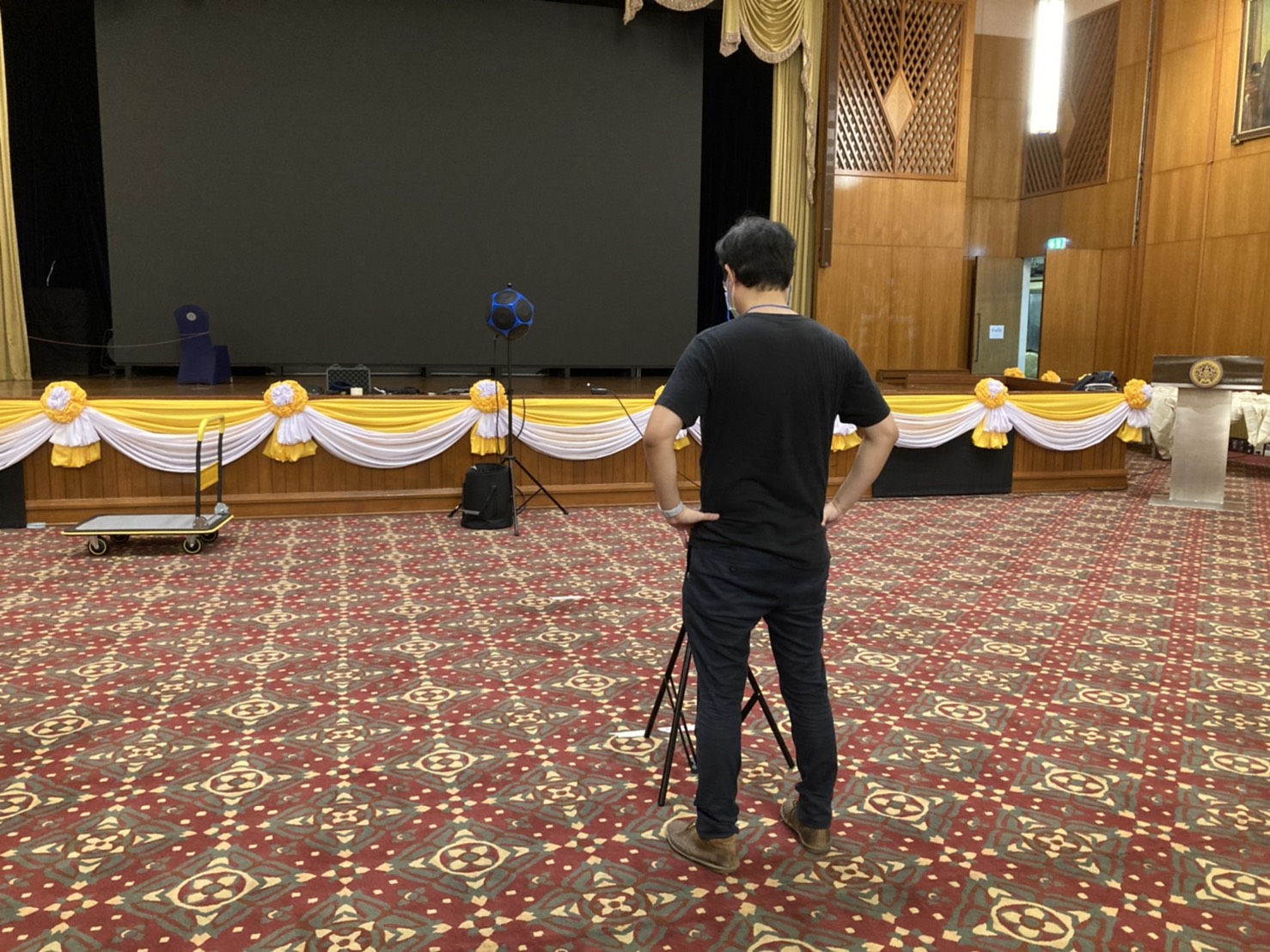Room Survey 38 – Ministry of Foreign Affairs – Bangkok, Thailand

Location: Bangkok, TH
Investigator: Tanadej Siriwattaprayoon1
Room: Vethes Samosorn, Ministry of Foreign Affairs
Microphone: Omni
Loudspeaker: NTI DS2 with NTI PA3 amplifier
Source Signal: 14-sec log sweep
Convolver/Deconvolver: GratisVolver™
Introduction
It’s been a while since I have published a room survey. The events of 2020 have complicated getting out into large spaces. A SynAudCon member from Thailand has shared his recent acoustic study of the main hall of the Ministry of Foreign Affairs in Bangkok. Tanadej S’prayoon utilized the room impulse response (RIR) collection process presented in SynAudCon courses. As a refresher, here are the steps.
Test Position Determination
The first question is “Where do I place the microphone?” Since there are an infinite number of possibilities, let’s narrow it down.
- Place a low-Q source in the space at a prominent talker position.
- Measure the physical distance to the farthest seat of interest, usually near the back audience row but away from large room surfaces. Mark this as a test position.
- Measure 1/2 that distance back to the source and mark as a test position.
- Measure 1/2 that distance back to the source and mark as a test position.
- Repeat until you are within a few meters of the source. This becomes Test Position 1 (TP1) and the others are numbered accordingly.
This physical layout results in a log-spaced series of TPs, related by the inverse-square law (Figure 1). In a free field, the direct field level LD would be expected to drop 6 dB between each position. In a statistically reverberant space the reverberant field level LR would be consistent between positions. The result is a gradually decreasing Speech Intelligibility (SI) that should be decent up near the source but degrade as the distance is increased.
 Figure 1 – Location of source (A0) and Test Positions (as modeled in CATT-Acoustic™). The logarithmic spacing establishes an acoustical relationship based on the direct field level (LD).
Figure 1 – Location of source (A0) and Test Positions (as modeled in CATT-Acoustic™). The logarithmic spacing establishes an acoustical relationship based on the direct field level (LD).
RIR Collection
There are many modern measurement platforms that can collect the RIR directly. For studies of this type, we prefer a more manual approach using log-sweep recordings made at each position. This frees the investigator from dealing with cables and it dramatically decreases the time required in the space. The log-sweep recording is processed into the RIR using GratisVolver™. An overview of the process can be found here.
A major benefit of this method is that the investigator is free to use various microphone types/patterns, from the simple omni to a full Ambisonics rig. I prefer the latter because it doesn’t require additional site time and it provides a directional RIR. The WAV file can be opened in programs like ARTA™ EASERA™ or ReflPhinder™ for further analysis.
Table of Results
A variety of measures can be used to analyze the RIR. ReflPhinder provides the RT, EDT, C50, and C80. Since the RIRs are in WAV file format, I opened them in ARTA to calculate the Speech Transmission Index (STI). A table comparing these values is shown in Figure 2. Much can be learned about the room and acoustics in general from such comparisons. Please see the SynAudCon article Effects of Early-Reflections on Speech Intelligibility for some related insights.

Figure 2 – Summary of relevant acoustic measures. These were mined from the RIRs using ReflPhinder and ARTA.
The Data
You can listen to convolutions for each test position. Compare them to the results table and see if you agree.
Reference Position: 2 m
Test Position 1: 4 m
Test Position 2: 8 m
Test Position 3: 16 m
Test Position 4: 32 m
Download WAV RIRs (Zip 1.2 MB)
Conclusion
I’ll wrap this with some comments from Tanadej from a recent email. He is to be commended for grinding through the learning curve for this RIR collection process and is now equipped with a fast, accurate, and powerful room analysis method. pb
Onto another subject, here, I’m attaching my convolved speeches with IRs obtained from 2M, 4M, 8M, 16M, 32M distance from the dodec from the main hall of the Ministry of Foreign Affairs located in BKK. They’re beautiful, check them out! I’ve also attached some pix. The distance grooves incredibly provide audible differences in the convolved speech tracks. I definitely understand why you measure it at a doubling the distance. To quantify something invisible to the visible (audible) domain, it really is very practical. And the whole work process from loading stuff into my car, setting them up on site, obtaining the IRs, and post-processing them at my office is super-efficient, and almost wireless! I’m using an XLR portable recorder on a stand to make a simple mono recording. And this is able to provide me with solid acoustical information that allows me to decide what to do with the hall. It’s a very elegant way to work, Pat. With this method of working my work process is very streamlined.
1- Tanadej performed this room survey. His company: Protime Business Co., Ltd. did not design or install the AV system in this particular room.

